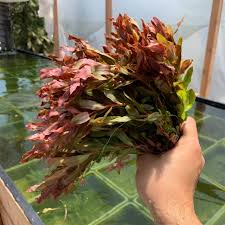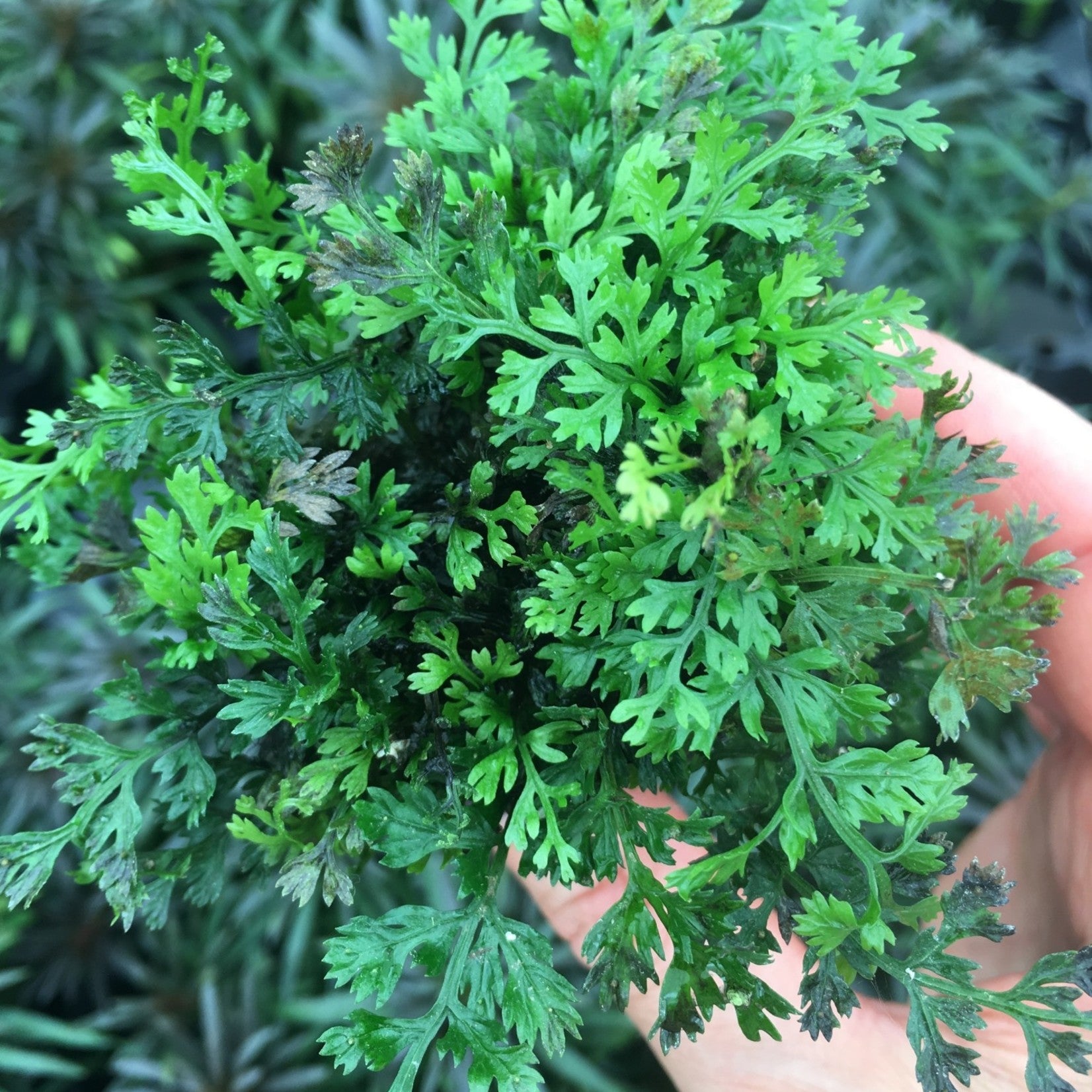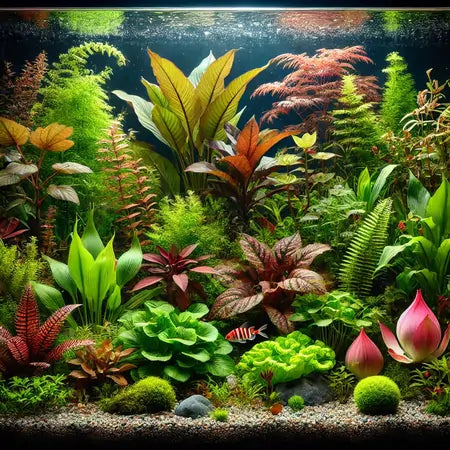Trending searches
$0

Creating a beautiful and thriving underwater landscape involves more than just choosing the right fish. Potted aquarium plants can play a vital role in enhancing the beauty and health of your aquatic environment. In this blog, we will explore how these plants can transform your aquarium and provide a harmonious habitat for your aquatic pets.
Potted plants offer several advantages over substrate-planted counterparts. They are easier to manage, can be moved around or replaced without disturbing the substrate, and can be combined with different plant species to create a diverse and dynamic environment.
One of the most notable benefits of potted aquarium plants is their ability to improve water quality. They absorb excess nutrients that can lead to algae overgrowth, thereby keeping the water cleaner and clearer. In addition to nutrient absorption, plants like Java Ferns and Anubias provide essential oxygen through the process of photosynthesis, which is crucial for the well-being of your aquatic pets.
Potted plants also offer a stable environment for introducing new flora to your tank. For those who like to experiment with different species or change the layout of their aquascape frequently, potted plants make the process hassle-free. You can easily shift or add new plants without the risk of disturbing the substrate and causing unwanted debris to cloud the water.
These plants can also act as natural filters. By taking in pollutants like ammonia, nitrites, and nitrates from the water, they help maintain a balanced ecosystem. This biological filtration can make a significant difference in reducing the need for mechanical filters and chemical additives, leading to a more natural and healthy habitat (source).
When selecting potted plants, it’s important to consider the needs of your fish and the conditions of your aquarium. Some plants are better suited for low light environments, while others thrive in high light settings. Researching plant types like Anubias, Java Ferns, and Cryptocorynes can help you find the perfect match for your tank.
If you’re new to aquarium plants, starting with hardy species such as Java Fern and Anubias is a great idea. These plants require minimal maintenance and can adapt to various water conditions. This makes them ideal for beginners who are just getting the hang of creating a balanced aquascape. Check out our guide for selecting and growing potted aquarium plants for more detailed information.
It’s also crucial to consider the compatibility of the plants with your fish. Some fish species prefer specific types of plants that provide adequate hiding spots and mimic their natural habitat. For instance, Amazon Sword Plants offer broad leaves that create excellent hiding places, while Cryptocoryne adds a touch of dense foliage, perfect for shy species.
For those interested in creating a biotope-style aquarium that replicates a specific natural environment, choosing the right plants is essential. Researching the flora of the natural habitat you are trying to mimic can guide you in selecting plants that are both aesthetically pleasing and beneficial for your designated fish species (source).
Potted aquarium plants are relatively easy to care for, making them ideal for both novice and experienced aquarists. Basic care tips include providing adequate lighting, using quality fertilizers, and maintaining proper water parameters. Regular trimming and pruning can also ensure your plants stay healthy and look their best.
One of the simplest ways to maintain your potted plants is to ensure they receive the right amount of light. Whether you have a low-light plant like Anubias or a light-hungry species like Amazon Sword, adjusting your tank’s lighting system can make a world of difference. Full-spectrum LEDs are often recommended for their ability to mimic natural sunlight, fostering healthier plant growth.
Fertilization is another key aspect of plant care. While the substrate in a tank holds some nutrients, potted plants benefit from liquid fertilizers that can enrich the water. These fertilizers provide essential nutrients like nitrogen, phosphorus, and potassium, promoting robust growth and vibrant colors in your plants.
Proper water parameters are equally important. Regularly check the pH, ammonia, nitrite, and nitrate levels in your tank to ensure they are within the recommended range for your specific plant species. Most potted plants thrive in slightly acidic to neutral water (pH 6.0-7.5). Regular water changes can also help in maintaining these optimal conditions (source).
Creating an aesthetically pleasing aquascape involves thoughtful placement and arrangement of your potted plants. Consider the size, color, and growth patterns of your plants to create focal points and natural hiding spots for your fish.
Start by placing larger plants in the background and midground of your aquarium. This creates a lush, layered look that adds depth and visual interest. Tall plants like Amazon Sword can serve as a stunning backdrop, while mid-sized plants like Cryptocoryne can fill in the middle space. Smaller plants, such as Anubias, can be placed in the foreground to create a well-balanced layout.
The use of color can also enhance the visual appeal of your aquascape. For instance, the vibrant green hues of Java Fern paired with the reddish-brown tones of Cryptocoryne can create a striking contrast. Pay attention to the texture of the plants as well. The broad leaves of Amazon Sword can complement the feathery appearance of Java Moss, creating a dynamic and engaging aquarium (source).
To create natural hiding spots and reduce stress for your fish, consider mimicking their natural habitat. Arrange the plants around driftwood or rocks to create cave-like structures and dense foliage where shy or smaller fish can retreat. This not only enhances the aesthetic appeal but also promotes the well-being of your aquatic pets.
While potted aquarium plants are generally low maintenance, they can still face challenges such as algae growth, nutrient deficiencies, or pest infestations. Learning to recognize these issues early and addressing them promptly can ensure your plants remain healthy and vibrant.
Algae growth is a common issue in aquariums, especially when there is an imbalance in light and nutrients. Reducing the lighting duration and ensuring that your plants outcompete the algae for nutrients can be effective solutions. You can also introduce algae-eating fish or invertebrates to help keep the algae in check.
Nutrient deficiencies can cause plants to exhibit symptoms such as yellowing leaves or stunted growth. Providing a balanced fertilizer regimen can help mitigate these issues. Be sure to use a fertilizer specifically designed for aquarium plants, as it will contain the necessary micronutrients to support healthy growth.
Pest infestations, although less common, can still pose a threat to your plants. Snails and certain insects may feed on plant leaves, causing damage. Regularly inspect your plants for signs of pests and consider introducing natural predators or using safe pest control methods. Keeping your tank clean and monitoring water quality can also help prevent pest issues from arising (source).
Another common challenge is ensuring that all plants receive adequate light. In heavily planted aquariums, some plants may overshadow others, leading to uneven growth. Regularly trim and prune your plants to maintain an open and even distribution of light. This can help prevent a few dominant plants from suffocating smaller or slower-growing species.
Using potted aquarium plants is a fantastic way to elevate your underwater landscape. They offer not only aesthetic appeal but also numerous benefits for the health and well-being of your aquarium’s inhabitants. From easy maintenance to improved water quality, these versatile plants are a must-have for any aquarium enthusiast looking to create a stunning and sustainable aquatic habitat.



Check out our shop for a variety of fresh, farm-grown plants! Find the perfect options to enhance your aquarium today.
!